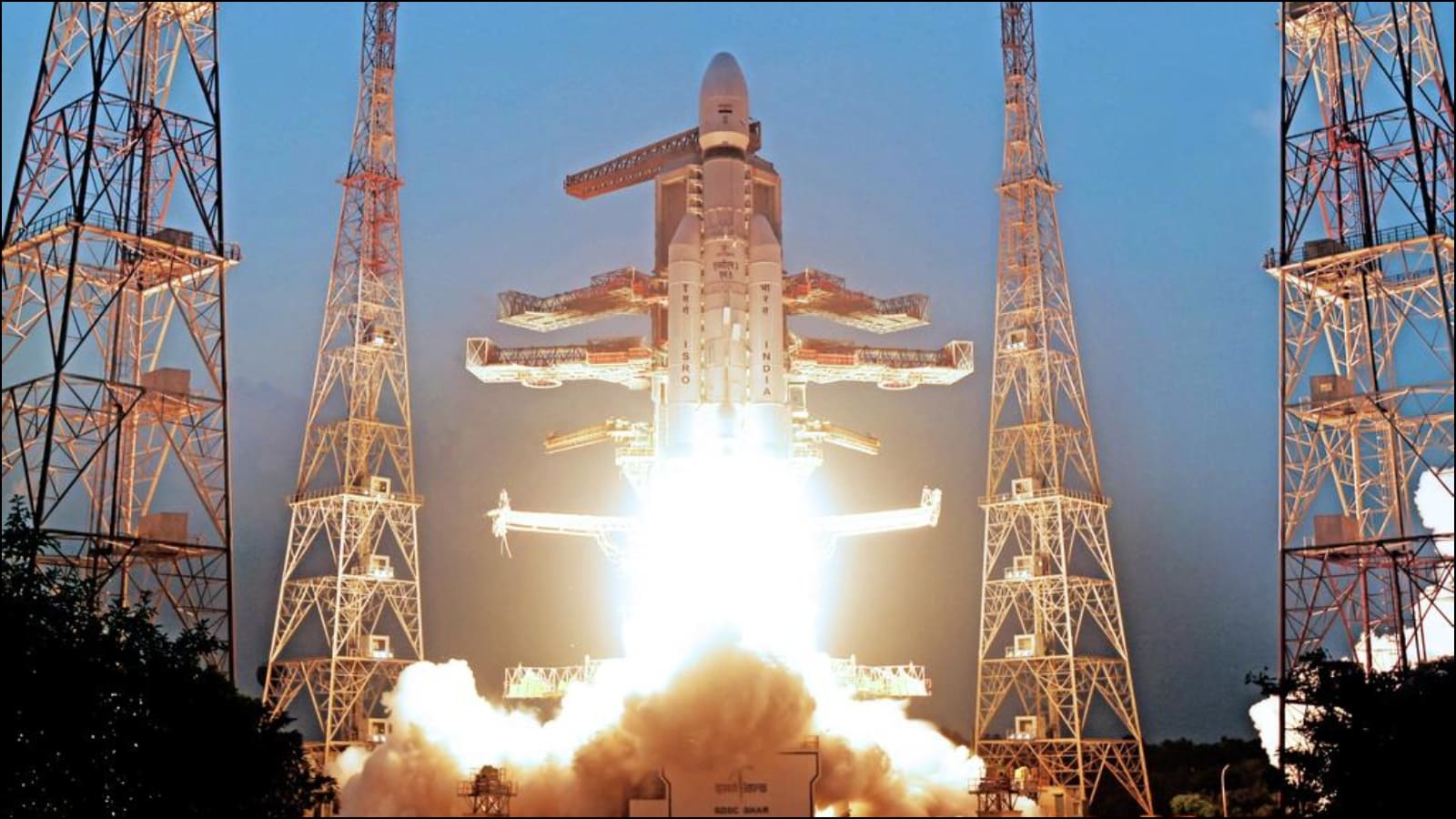Copyright news18

On Sunday evening, the Indian Space Research Organisation (ISRO) launched CMS-03, its heaviest communication satellite to date, from the Satish Dhawan Space Centre in Sriharikota. The 4,410-kg satellite was carried by the LVM3-M5 rocket, also known as ‘Bahubali’ for its lifting strength, and placed in geosynchronous transfer orbit after a 24-hour countdown. This is the first time India has launched a communication satellite weighing more than four tonnes from its own soil, and the heaviest satellite ever launched by an Indian-built rocket into geosynchronous transfer orbit. Earlier, heavier Indian satellites such as GSAT-11, GSAT-24 and GSAT-20 had to rely on foreign launchers like Arianespace and SpaceX. The success confirms that ISRO’s most powerful launcher can now handle payloads that once required international missions. The LVM3, which has previously launched Chandrayaan-2, Chandrayaan-3 and multiple OneWeb satellites, demonstrated that it can carry heavy communication payloads as well. The flight was the eighth successful mission of the LVM3 series, extending its unbroken record of reliability. ISRO Chairman V Narayanan described the mission as “a shining example of Atmanirbhar Bharat (self-dependent India)”, noting that the agency has achieved full self-reliance in designing and launching heavy satellites. What Is CMS-03 And What Will It Do? CMS-03 is a multi-band communication satellite designed for a mission life of at least fifteen years. It operates across multiple communication bands, supporting high-speed data and secure transmission. It is built to serve both civilian and strategic users, extending high-bandwidth coverage across the Indian subcontinent and surrounding oceanic regions. Its transponders can carry voice, data and video signals across C, Ku and Ka bands. This will strengthen telecom and broadcasting networks, improve broadband access for remote regions, and support services such as tele-education, telemedicine and disaster management. It will also enhance broadband links for ships and aircraft operating over the Indian Ocean. Once in orbit, CMS-03 will replace older communication satellites, ensuring uninterrupted links for users on land, at sea and in the air. The satellite incorporates new indigenous technologies and reflects India’s growing self-reliance in space-based communication systems. What Makes CMS-03 Crucial For India’s Naval Operations For the Indian Navy, CMS-03, also known as GSAT-7R, represents a major upgrade over GSAT-7 ‘Rukmini’, which has served as the Navy’s communication satellite since 2013. Its predecessor was launched from French Guiana aboard an Ariane-5 E rocket, underscoring how far India’s launch capability has progressed in the past decade. GSAT-7R introduces higher bandwidth and stronger encryption, enabling secure, real-time communication between warships, submarines, aircraft and Maritime Operations Centres. It strengthens space-based communications and maritime domain awareness across the Indian Ocean Region. With faster, secure data and imagery links, commanders can make real-time operational decisions at sea. The satellite will help track hostile warships and pirates, support joint operations with aircraft and unmanned systems, and ensure that India’s naval assets remain connected even when dispersed across vast distances. How ISRO’s LVM3 ‘Bahubali’ Rocket Powered The CMS-03 Mission The LVM3 (Launch Vehicle Mark-3) is ISRO’s most powerful rocket, standing 43.5 metres tall and weighing about 640 tonnes. It can carry up to 4,000 kg to geosynchronous transfer orbit or 8,000 kg to low-Earth orbit. The launcher operates in three stages: twin S200 solid boosters that ignite for lift-off, an L110 liquid core stage powered by twin Vikas engines for mid-flight control, and a cryogenic upper stage that delivers the final push to orbit. For this flight, ISRO used an upgraded C32 cryogenic stage, increasing fuel load from 28,000 kg to 32,000 kg and thrust from 20 to 22 tonnes. The improvement raised the rocket’s payload capacity by about 10 per cent compared to the previous LVM3-M4 mission that carried Chandrayaan-3. The upgrade was introduced to handle heavier payloads like CMS-03 and will now be used for future missions requiring high-lift capacity. The launch sequence ran exactly to plan: the solid boosters ignited for lift-off, the liquid stage took over at higher altitude, and the cryogenic engine provided the final burn that placed CMS-03 into its precise trajectory. How Will It Improve Communication Across India? CMS-03 will strengthen both civilian and defence communication networks. For everyday users, it expands the reach of telecom, broadcasting and internet services, reducing dependence on terrestrial networks in remote areas. For the armed forces, it ensures secure and stable connectivity over long distances and in harsh environments. A Self-Reliance Breakthrough India’s heaviest satellites — including GSAT-11 (5,854 kg) and GSAT-24 (4,181 kg) — were earlier launched by Arianespace from French Guiana, while the 4,700-kg GSAT-20 used a SpaceX vehicle. CMS-03’s launch from Sriharikota ends that dependency. This means India no longer relies on foreign agencies like Arianespace for launching large GTO-class satellites. It saves foreign-launch costs, secures control over schedules, and strengthens national confidence in indigenous hardware. ISRO Chairman said the success “marks another proud moment for ISRO and India’s space fraternity”, crediting the LVM3’s reliability for making the country’s heavy-lift ambitions fully domestic. What Comes Next For ISRO? ISRO is targeting seven launches by March next year, including another LVM3 mission in December and the first uncrewed test of the Gaganyaan programme, which will carry the robotic astronaut Vyommitra. Work is on in full swing for this uncrewed flight, which will precede India’s first human space mission. The LVM3, which powered Chandrayaan-3, now anchors both India’s exploration and communication portfolios, from deep-space projects to defence and telecom satellites. Its successful handling of CMS-03 confirms that the same launcher can meet scientific, commercial and strategic requirements alike.



